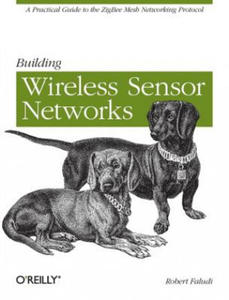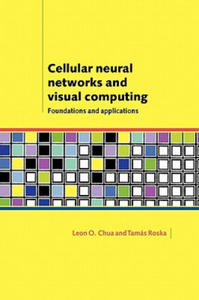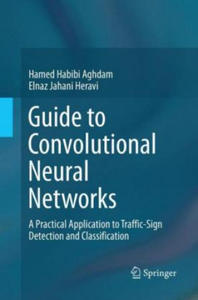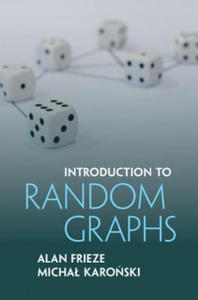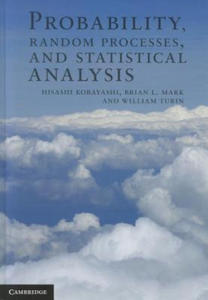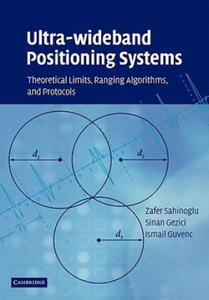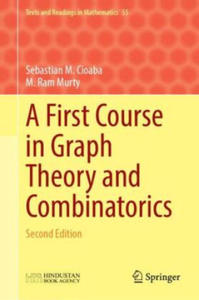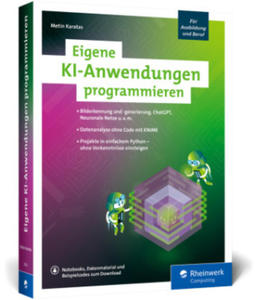ematador ideal networks
- znaleziono 39 produktów w 7 sklepach
Building Wireless Sensor Networks O'Reilly Media
Książki / Literatura obcojęzyczna
Get ready to create distributed sensor systems and intelligent interactive devices using the ZigBee wireless networking protocol and Series 2 XBee radios. By the time you're halfway through this fast-paced, hands-on guide, you'll have built a series of useful projects, including a complete ZigBee wireless network that delivers remotely sensed data. Radio networking is creating revolutions in volcano monitoring, performance art, clean energy, and consumer electronics. As you follow the examples in each chapter, you'll learn how to tackle inspiring projects of your own. This practical guide is ideal for inventors, hackers, crafters, students, hobbyists, and scientists.* Investigate an assortment of practical and intriguing project ideas * Prep your ZigBee toolbox with an extensive shopping list of parts and programs * Create a simple, working ZigBee network with XBee radios in less than two hours -- for under $100 * Use the Arduino open source electronics prototyping platform to build a series of increasingly complex projects * Get familiar with XBee's API mode for creating sensor networks * Build fully scalable sensing and actuation systems with inexpensive components * Learn about power management, source routing, and other XBee technical nuances * Make gateways that connect with neighboring networks, including the Internet
Sklep: Libristo.pl
Cellular Neural Networks and Visual Computing Cambridge University Press
Książki / Literatura obcojęzyczna
Cellular Nonlinear/neural Network (CNN) technology is both a revolutionary concept and an experimentally proven new computing paradigm. Analogic cellular computers based on CNNs are set to change the way analog signals are processed and are paving the way to an analog computing industry. This unique undergraduate level textbook includes many examples and exercises, including CNN simulator and development software accessible via the Internet. It is an ideal introduction to CNNs and analogic cellular computing for students, researchers and engineers from a wide range of disciplines. Although its prime focus is on visual computing, the concepts and techniques described in the book will be of great interest to those working in other areas of research including modeling of biological, chemical and physical processes. Leon Chua, co-inventor of the CNN, and Tamás Roska are both highly respected pioneers in the field.
Sklep: Libristo.pl
Guide to Convolutional Neural Networks Springer International Publishing AG
Książki / Literatura obcojęzyczna
This must-read text/reference introduces the fundamental concepts of convolutional neural networks (ConvNets), offering practical guidance on using libraries to implement ConvNets in applications of traffic sign detection and classification. The work presents techniques for optimizing the computational efficiency of ConvNets, as well as visualization techniques to better understand the underlying processes. The proposed models are also thoroughly evaluated from different perspectives, using exploratory and quantitative analysis.Topics and features: explains the fundamental concepts behind training linear classifiers and feature learning; discusses the wide range of loss functions for training binary and multi-class classifiers; illustrates how to derive ConvNets from fully connected neural networks, and reviews different techniques for evaluating neural networks; presents a practical library for implementing ConvNets, explaining how to use a Python interface for the library to create and assess neural networks; describes two real-world examples of the detection and classification of traffic signs using deep learning methods; examines a range of varied techniques for visualizing neural networks, using a Python interface; provides self-study exercises at the end of each chapter, in addition to a helpful glossary, with relevant Python scripts supplied at an associated website.This self-contained guide will benefit those who seek to both understand the theory behind deep learning, and to gain hands-on experience in implementing ConvNets in practice. As no prior background knowledge in the field is required to follow the material, the book is ideal for all students of computer vision and machine learning, and will also be of great interest to practitioners working on autonomous cars and advanced driver assistance systems.
Sklep: Libristo.pl
Introduction to Artificial Intelligence Springer International Publishing AG
Książki / Literatura obcojęzyczna
This accessible and engaging textbook presents a concise introduction to the exciting field of artificial intelligence (AI). The broad-ranging discussion covers the key subdisciplines within the field, describing practical algorithms and concrete applications in the areas of agents, logic, search, reasoning under uncertainty, machine learning, neural networks, and reinforcement learning. Fully revised and updated, this much-anticipated second edition also includes new material on deep learning.Topics and features: presents an application-focused and hands-on approach to learning, with supplementary teaching resources provided at an associated website; contains numerous study exercises and solutions, highlighted examples, definitions, theorems, and illustrative cartoons; includes chapters on predicate logic, PROLOG, heuristic search, probabilistic reasoning, machine learning and data mining, neural networks and reinforcement learning; reports on developments in deep learning, including applications of neural networks to generate creative content such as text, music and art (NEW); examines performance evaluation of clustering algorithms, and presents two practical examples explaining Bayes' theorem and its relevance in everyday life (NEW); discusses search algorithms, analyzing the cycle check, explaining route planning for car navigation systems, and introducing Monte Carlo Tree Search (NEW); includes a section in the introduction on AI and society, discussing the implications of AI on topics such as employment and transportation (NEW).Ideal for foundation courses or modules on AI, this easy-to-read textbook offers an excellent overview of the field for students of computer science and other technical disciplines, requiring no more than a high-school level of knowledge of mathematics to understand the material.
Sklep: Libristo.pl
Cryptography and Secure Communication Cambridge University Press
Książki
Today's pervasive computing and communications networks have created an intense need for secure and reliable cryptographic systems. Bringing together a fascinating mixture of topics in engineering, mathematics, computer science, and informatics, this book presents the timeless mathematical theory underpinning cryptosystems both old and new. Major branches of classical and modern cryptography are discussed in detail, from basic block and stream cyphers through to systems based on elliptic and hyperelliptic curves, accompanied by concise summaries of the necessary mathematical background. Practical aspects such as implementation, authentication and protocol-sharing are also covered, as are the possible pitfalls surrounding various cryptographic methods. Written specifically with engineers in mind, and providing a solid grounding in the relevant algorithms, protocols and techniques, this insightful introduction to the foundations of modern cryptography is ideal for graduate students and researchers in engineering and computer science, and practitioners involved in the design of security systems for communications networks.
Sklep: Booknet.net.pl
Introduction to Random Graphs Cambridge University Press
Książki / Literatura obcojęzyczna
From social networks such as Facebook, the World Wide Web and the Internet, to the complex interactions between proteins in the cells of our bodies, we constantly face the challenge of understanding the structure and development of networks. The theory of random graphs provides a framework for this understanding, and in this book the authors give a gentle introduction to the basic tools for understanding and applying the theory. Part I includes sufficient material, including exercises, for a one semester course at the advanced undergraduate or beginning graduate level. The reader is then well prepared for the more advanced topics in Parts II and III. A final part provides a quick introduction to the background material needed. All those interested in discrete mathematics, computer science or applied probability and their applications will find this an ideal introduction to the subject.
Sklep: Libristo.pl
Probability, Random Processes, and Statistical Analysis Cambridge University Press
Książki / Literatura obcojęzyczna
Together with the fundamentals of probability, random processes and statistical analysis, this insightful book also presents a broad range of advanced topics and applications. There is extensive coverage of Bayesian vs. frequentist statistics, time series and spectral representation, inequalities, bound and approximation, maximum-likelihood estimation and the expectation-maximization (EM) algorithm, geometric Brownian motion and Itô process. Applications such as hidden Markov models (HMM), the Viterbi, BCJR, and Baum
Sklep: Libristo.pl
Electronics Circuits & Systems Butterworth Heinemann
Inne 1
Electronics -- Circuits and Systems is a truly up-to-date textbook, with coverage carefully matched to the latest AS and A-level specifications in Electronics from AQA, OCR and WJEC. It is also matched to the Electronics units for BTEC National and AVCE Engineering.The material has been organised with a logical learning progression, making it ideal for a wide range of pre-degree courses in electronics. The approach is student-centred with Self Test features to check understanding and numerous Activities suitable for practicals, homework and other assignments. Key facts, formulae and definitions are highlighted to aid revision, and theory is backed up by numerous examples throughout the book. Each chapter ends with a set of problems, including exam-style questions and multiple-choice questions with numerical and multiple-choice answers provided in the back of the book.New material in the second edition includes: microcontrollers; neural networks; power supply circuits; audio systems and instrumentation systems.Owen Bishop's talent for introducing the world of electronics has long been a proven fact with his Beginner's Guide to Electronics, Understand Electronics and a range of popular circuit construction guides being chosen by thousands of students, lecturers and electronics enthusiasts.Ideal for students following their first course in electronics at a pre-degree levelHighly visual learning style with numerous worked examples appeals to electronics studentsNew edition with a highly practical focus, incorporating 'Self Test' exercises throughout
Sklep: Albertus.pl
INT-SLS-815 Stabilizowane źródło lasera 1310/1550nm,
Urządzenia Pomiarowe > Stabilizowane źródła lasera
Brief Introduction ST815 Series handheld optical light source provides a lot of convenience for your field work. High stability of output power and quite stable output wavelength, it is an ideal instrument for optical network installation, trouble shooting, maintenance and other optical fiber related systems. Together with the ST800k or ST800H optical power meter, it is a perfect solution for fiber optic network applications. Total Have four Sub models, for example ST815B allows for the testing of passive optical networks (PONs) at 1310 nm, 1490 nm and 1550 nm, the three wavelengths recommended by the ITU-T (G.983.3) for PONs. Key Features
Sklep: Intersell.pl
Distributed network protocols for anonymous stations in cooperative and noncooperative settings Politechnika Gdańska
INFORMATYKA
This work studies the effects of station anonymity and/or noncooperative (selfish) station behavior upon the design and performance of selected distributed network protocols. A set of stations interconnected by a computer network are assumed to be engaged in a collective activity for which some inter-station consistency is required. The considered protocols relate to group communication (where message delivery in agreed order is required), random multiple access over a single channel (where collision avoidance is required), and packet forwarding (where maintenance of end-to-end paths is required). Design of distributed protocols for anonymous stations permits to dispense with costly authentication mechanisms, and provides a "security lower bound" for systems in which station identities are relied upon. Modeling of noncooperative settings (where stations are allowed to behave selfishly) is justified in view of the increased autonomy and user configurability of today's network components; at the same time, as a departure from the traditional engineering paradigm, it opens up interesting areas of networking research. In Chapter 2, two agreed order multicast protocols are proposed for anonymous stations in a cooperative setting. Both are LAN-oriented i.e., designed to yield high group throughput by exploiting the natural synchronism of single-broadcast transmission media. A faulty communication environment is assumed with occasional reception misses - failures by one or more stations to receive a message. The Distributed Precedence Graph (DPG) protocol is network-independent in that multicast and reception primitives clearly define a protocol-to-network interface, and missed message recovery is separated from message ordering. In contrast, the Jamming Protocol (JP) is network-dependent and exploits in a novel way the "ideal synchronism" of LAN broadcast to couple missed message recovery and message ordering. Both proposed protocols are insensitive to membership control mechanisms and do without the knowledge of station identities. Even so, they compare favorably with existing agreed order multicast protocols like LANSIS or TOTEM, as demonstrated by the analysis of logicaltime properties and simulation of stochastic performance. Chapters 3 through 5 are devoted to game-theoretic analysis of random access MAC-layer protocols in a noncooperative setting. Chapter 3 deals with CSMA/CA, the multiple access mechanism of the IEEE 802.11 MAC protocol. It is argued that in an ad hoc wireless LAN, CSMA/CA is vulnerable to a selfish backoff attack consisting in systematic selection of short backoff times. Network performance under a backoff attack is evaluated via extension of Bianchi's Markovian approximation, as well as using more accurate models. A sufficient condition of solvability is given and a game-theoretic analysis is carried out with stations' bandwidth shares regarded as payoffs. Launching a backoff attack is established as a strictly dominating action, the payoff structure of the resulting one-shot CSMA/CA game being similar to a multiplayer Prisoners' Dilemma (with a unique and Pareto non-optmal Nash equilibrium). The notion of a Nash capacity is introduced to show that selfish station behavior reduces the achievable bandwidth utilization roughly by half compared with a cooperative setting. Incentive-based discouragement of backoff attacks is proposed in Chapter 4 using the concept of a repeated CSMA/CA game, where a station is allowed to reconfigure its CSMA/CA mechanism based upon past payoffs. Assuming that most stations are interested in enforcing cooperative behavior of the other stations, a satisfactory equilibrium play is shown possible. In particular, a selfish station can be expected to incline to honest play for fear of the other stations inclining to selfish play. This idea is elaborated upon and gives rise to two proposed strategies of playing the repeated CSMA/CA game, called Cooperation via Randomized Inclination to Selfish Play (CRISP) and Selfish Play to Elicit Live-and-Let-live (SPELL). By exploiting another property of the one-shot CSMA/CA game, called coarse profile observability, CRISP and SPELL are shown to asymptotically achieve Pareto optimality and the related Nash equilibrium becomes subgame perfect. It is shown how to extend the proposed strategies if some stations disengage the CSMA/CA backoff scheme. Chapter 4 concludeswith a discussion of QoS-sensitive station behavior, in which case the CSMA/CA game may change from a Prisoners' Dilemma into a form of a queuing game. Selfish behavior of CSMA/CA stations studied in Chapters 3 and 4 only affects specific protocol parameters, leaving the very principle of contention unchanged. In Chapter 5 we look at a slightly more general model of single-channel contention. In the proposed framework, the MAC protocol proceeds in cycles, each of which accommodates the stations' requests to transmit. This subsumes various existing random token-like protocols e.g., CSMA/CA, Random Token, slotted ALOHA, and HIPERLAN/1. A selection configuration determines how the requests are placed, whereas a winner policy decides the winner of a contention. It is argued that while the winner policy must be agreed upon by all the stations, the selection configuration is entirely within a station's discretion. For a wide class of winner policies, called Random Token with Extraneous Collision Detection (RT/ECD), the notions of verifiability and viability are introduced to factor out brute-force selfish behavior, and shown to lead to two interesting winner policies, RT/ECD-0 and RT/ECD--. The resulting games are found to be a multiplayer Prisoners' Dilemma and an anti-coordination game, respectively. Related repeated games are again found to potentially lead to cooperative behavior. In Chapter 6, selfishness considerations are extended to the network layer of a mobile ad hoc network (MANET). Each MANET station generates source packets and also is supposed to forward transit packets for pairs of stations currently out of each other's reception range. It is argued that forwarding transit packets becomes a dual liability: it shortens the station's battery life "in exchange for" sacrificing a portion of the channel bandwidth that could be used for source packets. Under the introduced packet anonymity model (no packet reveals its source station except at destination), undetectable selfish manipulation of the local congestion controls is possible. The issue is addressed in a noncooperative game-theoretic framework: each MANET station selects its own strategy (congestion control settings) at will, so as to maximize some defined payoff (a combination of source packet throughput and a reputation measure). For a class of Drop-and-Throttle (D&T) congestion control mechanisms, a generic model is formulated, whereby a station adjusts its D&T threshold in response to the other stations' adjusted thresholds; this model is subsequently translated into a simple extensive-form game. Types of reachable Nash equilibria are discussed and the notion of robustness of a Nash equilibrium is introduced. Finally, a novel packet forwarding protocol called Fair Forwarding with Forced Transmissions (F3T) is presented, which, if properly configured, leads to a desirable type of Nash equilibrium. Spis treści: CONTENTS LIST OF SYMBOLS AND ABBREVIATIONS 1. INTRODUCTION 1.1. Motivation, objective, and scope 1.2. Outline of the contents 2. MEMBERSHIP INSENSITIVE AGREED ORDER MULTICAST 2.1. Introduction and related work 2.2. Message ordering constraints 2.3. Jamming Protocol 2.3.1. LAN model 2.3.2. JP mechanisms and data structures 2.3.3. Jamming and lag detection 2.3.3.1. Ethernet 2.3.3.2. Token Ring 2.3.4. "Catch-up" mechanism 2.4. Evaluation of JP 2.4.1. Logical-time properties of JP 2.4.2. Stochastic performance of JP 2.5. Distributed Precedence Graph protocol 2.5.1. Network service model 2.5.1.1. Wired or wireless single-channel LAN 2.5.1.2. Tag seąuencer 2.5.1.3. Bounded-deiay WAN with sparse group messages 2.5.2. DPG data structures and PDU types 2.5.3. Maintenance of strong ADO 2.5.4. Missed message recovery and flow control 2.6. Evaluation of DPG 2.6.1. Logical-time properties of DPG 2.6.2. Stochastic performance of DPG 2.7. Conclusion 3. BACKOFF ATTACK AND ONE-SHOT CSMA/CA GAME 3.1. Introduction and related work 3.2. Network operation 3.2.1. CSMA/CA contention under IEEE 802.11 DCF protocol 3.2.2. Network model 3.3. Solvability of EBM 3.3.1. Uniform CSMA/CA configuration profile 3.3.2. Non-uniform CSMA/CA configuration profile 3.4. Station performance 3.5. Backoff attack incentives 3.5.1. Selfish configurations 3.5.2. CSMA/CA game and Nash capacity 3.5.3. Selfish and greedy configurations 3.5.3.1. Incentives in a binary set of actions 3.5.3.2. Incentives in a temary set of actions 3.5.4. Mixed and Monte Carlo models 3.6. Conclusion 4. BACKOFF ATTACK DISCOURAGEMENT and REPEATED CSMA/CA GAME 4.1. Introduction and related work 4.2. Morę properties of one-shot CSMA/CA game 4.3. Repeated CSMA/CA game 4.3.1. Introduction to repeated games 4.3.2. Application to CSMA/CA game 4.4. CRISP strategy 4.4.1. Strategy description 4.4.2. Uncorrelated Pareto optimality and subgame perfection 4.4.3. Performance 4.4.4. Enforceability 4.4.5. Ternary CRISP 4.5. SPELL strategy 4.5.1. Strategy Description 4.5.2. Uncorrelated Pareto optimality and subgame perfection 4.5.3. Ternary SPELL 4.6. QoS game 4.6.1. One-shot QoS game 4.6.2. Dynamie QoS game scenarios 4.6.3. Stochastic QoS game 4.7. Conclusion and comments 5. NONCOOPERATIVE CHANNEL CONTENTION IN AD HOC LANS WITH ANONYMOUS STATIONS 5.1. Introduction 5.2. WLAN model 5.3. Framework for a winner policy 5.3.1. Reąuests to transmit 5.3.2. Verifiability 5.3.3. Performance objectives 5.3.4. Viability 5.4. Binary RT/ECD game 5.4.1. One-shot RT/ECD game 5.4.2. Stage-by-stage repeated RT/ECD game 5.4.2.1. Nash strategy 5.4.2.2. Idea Bag strategy 5.5. Cycle-by-cycle repeated RT/ECD game 5.5.1. Reinforcement learning strategies 5.5.2. Evolutionary stability 5.6. Conclusion 6. FAIR PACKET FORWARDING IN MOBILE AD HOC NETWORKS 6.1. Introduction 6.2. Related work 6.2.1. Reputation systems 6.2.2. Micropayment schemes 6.2.3. Game-theoretic approaches 6.3. Forwarding model and related selfish behavior 6.3.1. Forwarding model 6.3.2. Discussion of the model 6.3.3. Undetectable selfish behavior 6.4. Game-theoretic model 6.4.1. D&Tgame 6.4.2. Reachability of Nash eąuilibria 6.5. F3T protocol 6.5.1. Protocol description 6.5.2. D&T game payoffs under F3T 6.6. F3T protocol configuration and performance 6.7. Conclusion and future research 7. SUMMARY OF MAIN RESULTS BIBLIOGRAPHY Summary in English Summary in Polish
Sklep: Księgarnia Techniczna
Ultra-wideband Positioning Systems Cambridge University Press
Książki / Literatura obcojęzyczna
Position estimation of wireless devices has many applications in short-range networks. Ultra-wideband (UWB) signals provide accurate positioning capabilities that can be harnessed in wireless systems to realise these applications. This text provides detailed coverage of UWB positioning systems, offering comprehensive treatment of signal and receiver design for ranging, range estimation techniques, theoretical performance bounds, ranging algorithms and protocols. Beginning with a discussion of the potential applications of wireless positioning, and investigating UWB signals for such applications, later chapters establish a signal processing framework for analysing UWB positioning and ranging systems. The recent IEEE 802.15.4a standard related to UWB is also studied in detail. Each chapter contains examples, problems and Matlab scripts to help readers grasp key concepts. This is an ideal text for graduate students and researchers in electrical and computer engineering, and practitioners in the communications industry, particularly those in wireless communications. Further resources are available at www.cambridge.org/9780521873093.
Sklep: Libristo.pl
A First Course in Graph Theory and Combinatorics Springer, Berlin
Książki / Literatura obcojęzyczna
This book discusses the origin of graph theory from its humble beginnings in recreational mathematics to its modern setting or modeling communication networks, as is evidenced by the World Wide Web graph used by many Internet search engines. The second edition of the book includes recent developments in the theory of signed adjacency matrices involving the proof of sensitivity conjecture and the theory of Ramanujan graphs. In addition, the book discusses topics such as Pick's theorem on areas of lattice polygons and Graham-Pollak's work on addressing of graphs. The concept of graph is fundamental in mathematics and engineering, as it conveniently encodes diverse relations and facilitates combinatorial analysis of many theoretical and practical problems. The text is ideal for a one-semester course at the advanced undergraduate level or beginning graduate level.
Sklep: Libristo.pl
Data Structures and Algorithms with JavaScript O'Reilly Media, Inc, USA
Książki / Literatura obcojęzyczna
As an experienced JavaScript developer moving to server-side programming, you need to implement classic data structures and algorithms associated with conventional object-oriented languages like C# and Java. This practical guide shows you how to work hands-on with a variety of storage mechanisms - including linked lists, stacks, queues, and graphs - within the constraints of the JavaScript environment. Determine which data structures and algorithms are most appropriate for the problems you're trying to solve, and understand the tradeoffs when using them in a JavaScript program. An overview of the JavaScript features used throughout the book is also included.This book covers: Arrays and lists: the most common data structures Stacks and queues: more complex list-like data structures Linked lists: how they overcome the shortcomings of arrays Dictionaries: storing data as key-value pairs Hashing: good for quick insertion and retrieval Sets: useful for storing unique elements that appear only once Binary Trees: storing data in a hierarchical manner Graphs and graph algorithms: ideal for modeling networks Algorithms: including those that help you sort or search data Advanced algorithms: dynamic programming and greedy algorithms
Sklep: Libristo.pl
Emaga WRL ACCESS POINT 867MBPS/UNIFI UAP-AC-LITE UBIQUITI
empty
The UniFi AC Lite AP features the latest Wi-Fi 802.11ac technology in a refined industrial design and is ideal for cost-effective deployment of high
Sklep: emaga.pl
Eigene KI-Anwendungen programmieren Rheinwerk Verlag
Książki / Literatura obcojęzyczna
KI-Anwendungen selbst erstellen und mit eigenen Daten nutzen - das ist möglich mit frei verfügbarer Technologie, lokaler Hardware und sogar ohne Programmierkenntnisse.Die KI-Technologie wird in atemberaubendem Tempo immer zugänglicher. Mit diesem Buch sind Sie immer einen Schritt voraus. Lernen Sie einschlägige KI-Verfahren kennen und setzen Sie für jedes dieser Verfahren eine Anwendung selbst um. Dafür nutzen Sie die Data Science Plattform KNIME - ideal, um eigene Daten aus unterschiedlichen Quellen zu integrieren und mit rein grafischer Programmierung Anwendungen zu erstellen.Das Buch deckt eine Reihe von Themen ab, darunter: Künstliche neuronale Netze Entscheidungsbäume Bilderkennung Convolutional Neural Networks Transfer Learning Textgenerierung Unsupervised und Reinforcement Learning Transformer: ChatGPT, DALL-E und Co.Außerdem führen wir Sie in die Welt von TensorFlow und Keras ein und zeigen Ihnen, wie Sie Anwendungen in einfachem Python erstellen können. Alle vorgestellten Projekte sind in der beruflichen Bildung erprobt und haben sich als effektiv erwiesen.So bereichern Sie Ihre Skills mit einem modernen Werkzeugkasten, mit dem Sie maschinelles Lernen in der Datenanalyse, dem Controlling und vielen weiteren Anwendungsfeldern nutzen können.Alle Codebeispiele zum Download; Jupyter Notebooks erleichtern die Arbeit mit dem Material zum Buch. Starten Sie jetzt mit Ihrer eigenen KI!Aus dem Inhalt:Installation und KonfigurationMit verschiedenen Datenquellen arbeitenBilderkennungKlassifizierungsaufgabenConvolutional Neural NetworksTransfer LearningZeitreihenanalysenTexte generierenUnsupervised LearningReinforcement LearningDatenanalyse mit KNIMEEvolutionäre AlgorithmenChatGPT und DALL-E
Sklep: Libristo.pl
szukaj w Kangoo ematador ideal networks
Sklepy zlokalizowane w miastach: Warszawa, Kraków, Łódź, Wrocław, Poznań, Gdańsk, Szczecin, Bydgoszcz, Lublin, Katowice
Szukaj w sklepach lub całym serwisie
1. Sklepy z ematador pl ideal networks
2. Szukaj na wszystkich stronach serwisu
t1=0.029, t2=0, t3=0, t4=0.015, t=0.029

